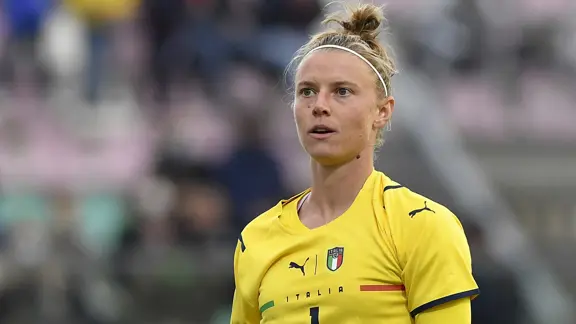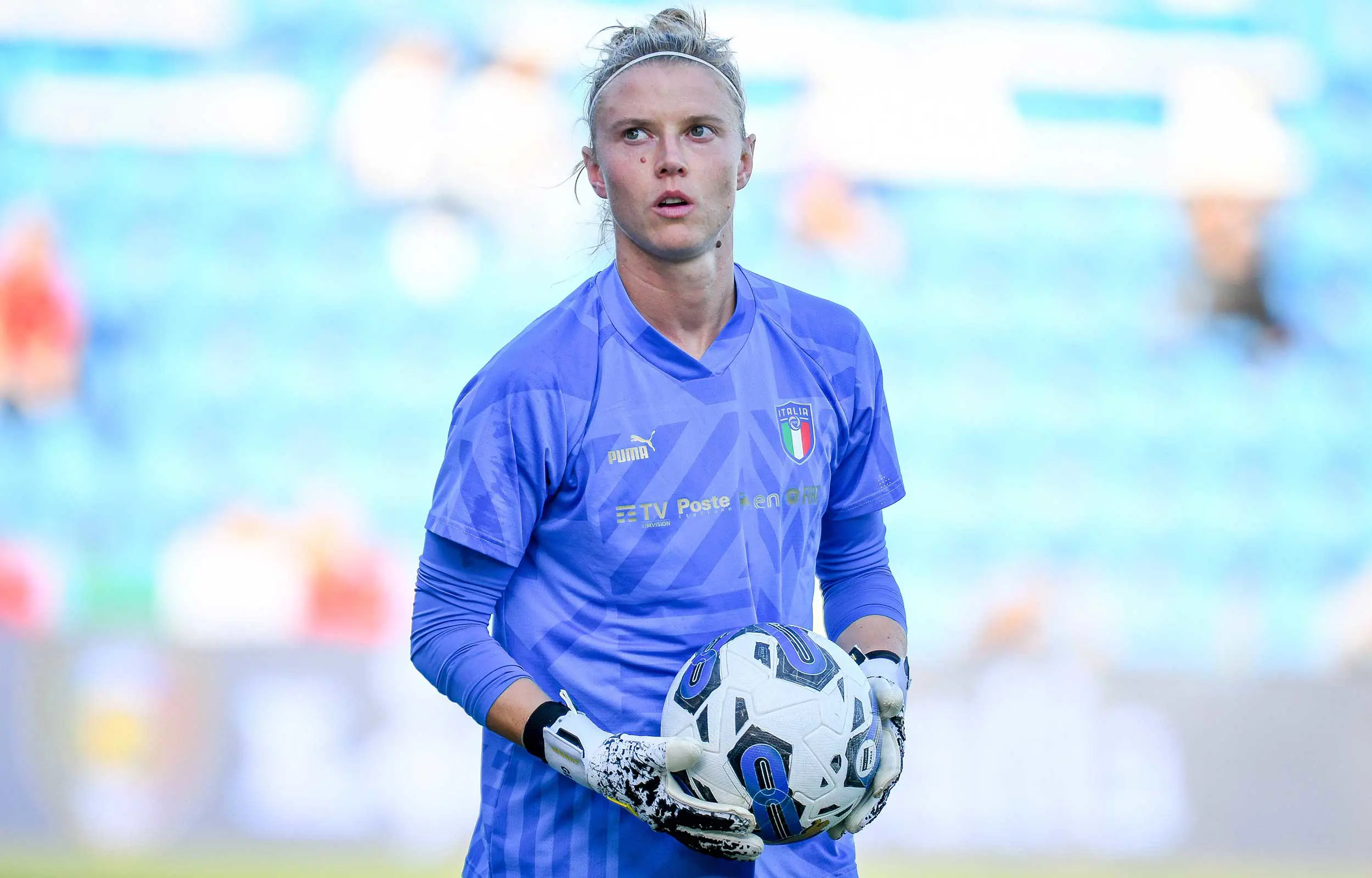Player Op-Ed
Katja Schroffenegger: "What I learned from a collapsed lung"

About the author
Italian international goalkeeper Katja Schroffenegger signed for Como in 2024 but spent the best part of her first season recovering from a torn Achilles tendon. During this period, she suffered a lung collapse, a condition that can be fatal if left untreated. The 34-year-old is back playing and wants to highlight the importance of talking about less common injuries in football.
By Katja Schroffenegger
I couldn’t breathe. I thought I was having a heart attack.
I was on the pitch doing rehab work after my surgery on my Achilles tendon, and while taking a break between two exercises I just couldn’t get a breath. It wasn’t normal; I wasn’t doing anything particularly strenuous and I couldn’t get any air into my body.
I told my rehab coach that something was wrong. He took me to hospital and I remember wondering if it could be a heart attack, even though the pain was on the right side of my chest.
When I arrived at the hospital the doctors immediately gave me an ECG to check my heart, and when that came up clear they gave me an X-ray and discovered that my right lung had collapsed. There was no warning, no trauma beforehand. All I know is that one moment I was fine and the next I felt like I was fighting for my life.
They told me that the cause could have been air bubbles that developed and triggered the collapse when they popped. The doctors operated straight away, explaining that the condition was extremely serious and needed immediate intervention. They put a tube into me and pumped up my lung, ensuring that I could breathe normally again.
However, I needed another operation. A bigger one. Without it, the likelihood of it happening again could be as high as 40 percent. Those weren’t odds I was willing to take, especially as a goalkeeper, as I couldn’t live a life where I feared any kind of physical impact.

I underwent the surgery and I was discharged a fortnight later. I was still in a lot of pain, I had to sleep sitting up and there was a long rehab period ahead. The part I really struggled with was the loneliness.
The doctors discharged me and told me I could go back to normal life, but they didn’t have any advice for life as a footballer. The club’s and my own medical staff didn’t have a blueprint for what to do and we had to create one from scratch.
In the first month of recovery I wasn’t allowed to do anything at all, then I took it easy with some light swimming, a bit of biking, lots of Pilates – nothing over 120bpm. We progressed the plan slowly until I was back in training just three months later.
There were a lot of different factors involved and it was quite stressful to think of all the communication. While I was in hospital, Como made it easier by giving me a direct channel with the club doctor who passed on the relevant information, so I could just focus on getting better. She was a brilliant support at all stages of the process and, along with the help from my own doctor, my physio and my rehab coach, I played my first game three and a half months after the collapse.
I’m lucky because Como has an osteopath as part of the medical team and I’m still benefitting from this support as I continue to build my strength. However, not every player has this, and there is other support – such as respiratory physiotherapy – that just wasn't possible on the budget available to a women’s team player, even in Serie A.
When you damage your Achilles tendon it’s awful; you know you’re in for a long period of recovery before you can play again – in my case I wasn’t sure if I’d be back at all – but at least you can face it head on. There was no-one talking about life with a collapsed lung, so there were no cases for me to learn from and no-one to share my experiences with.
“The more that people talk about this, the better we can be at addressing it and developing set programmes for recovery.”
I asked the doctors if having had this complication and the ensuing surgery could mean my health would be less reliable in the future, if it could be a warning sign for future clubs looking at players. They responded that having the second surgery means that I am hardly more likely to suffer from related health complications than anyone else. I spoke to my doctor who works with a Serie A men’s team, and he told me that a fair few players have had some kind of lung collapse or another, however none of them are talking about it.
Of course, there are varying degrees – mine was pretty serious – but there is no reason for us to stay quiet about injuries like this in football. We should speak out about our experiences, how they developed, how we recovered and ultimately how we returned to the game. The worst part of this for me was the fear of the unknown, and I hope that by speaking about it that it will help the next player it happens to.
The more that people talk about this, the better we can be at addressing it and developing set programmes for recovery. Our bodies are so important for our careers and we shouldn’t have to guess at what steps we need to take to protect them.
I’m not pain-free now, but I am getting stronger every day with the medical support available to me. Having a lung collapse is a scary and dangerous thing, but it doesn’t mean the end of your career, or even as long a pause as you might think.
Let’s make it easier for the next player, just by talking about it.
